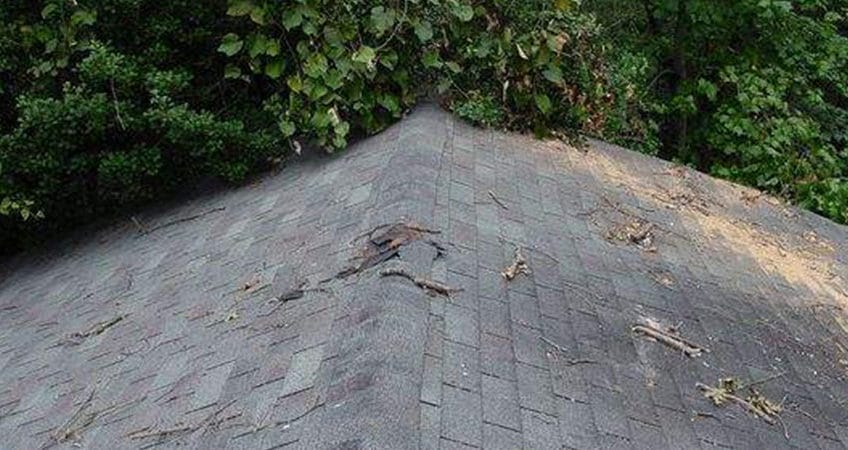Overhanging branches present a threat to your roof, and could result in expensive repairs or roof replacement. Even branches that do not touch the shingles could be easily weighed down with snow and sleet over the winter months. Take a close look at the trees and shrubs around your home and watch for these potentially dangerous conditions.
Shrubs and Low Growing Trees
Although they may not reach the roof, dense shrub branches and low growing trees often encroach on the foundation of your home. This growth creates a hiding place for critters and makes foundation inspection and repair challenging. This type of growth can also cover your windows, making your home less efficient and increasing your heating costs all winter long.
Experts suggest keeping an 18-inch space between your foundation walls and the nearest shrub branches. Also, keep growth away from the windows to allow natural sunlight in and avoid damage to the panes. Tree trimming helps to keep shrub growth under control, allowing you to breathe easier this season.
Tree Branches
Keep an eye out for tree branches that overhang the roof or eaves. Old or new growth that stretches over your house could present a problem.
Branches brush against asphalt shingles, scraping away the material layer by layer. A strong gust of wind could also give the branches enough power to rip off pieces of your roof, exposing the plywood roof deck to the weather and leaving your home vulnerable to leaks and mold growth.
Roof leaks are difficult to repair at any time of year, but present a unique challenge in the winter months. Contact your tree services professional to have overhanging branches trimmed away, protecting your shingles from this danger.
Winter storms can also send nearby branches crashing onto your roof, punching holes in the roofing material and permanently damaging the roof deck. Assess the age and position of mature branches and consider the value of preventative tree trimming this year.

